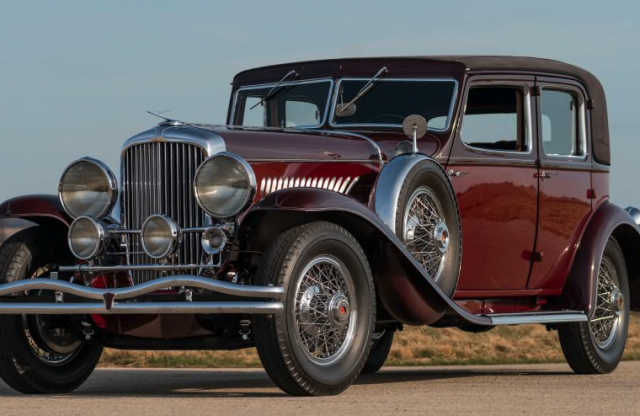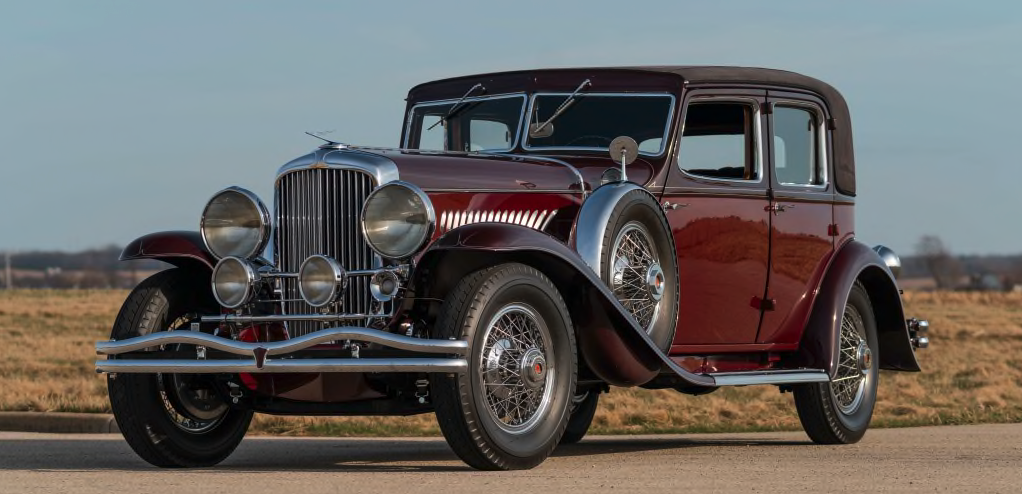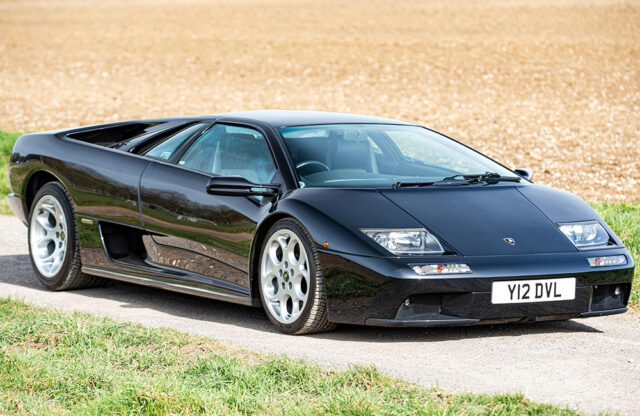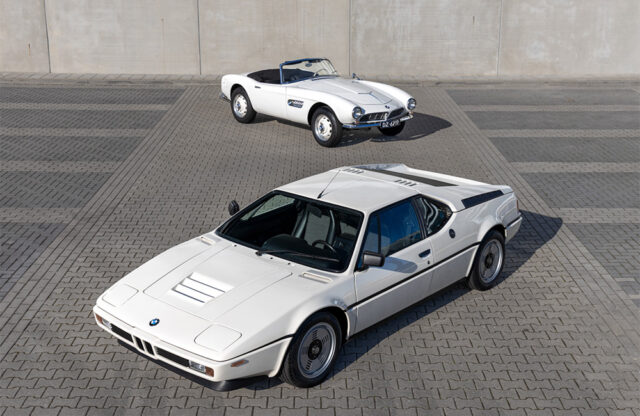Words: Nathan Chadwick | Photos: Mecum Auction
Mecum Auctions returns to Indianapolis for its 36th Original Spring Classic, which takes place at the Indiana State Fairgrounds from May 12-20, 2023.
More than 3000 vehicles are being put up for auction, with plenty of rare-groove muscle cars lining up – how about one of seven 1970 Pontiac GTO Judge Ram Air IV Convertibles with automatic transmission? Or one of four black-and-blue 1967 Chevrolet Corvette Convertibles? However, we’ve broadened our focus beyond rare colour combinations to bring you ten of our lots to look out for. Which one do you fancy most?
1960 Chevrolet Corvette Le Mans Racer
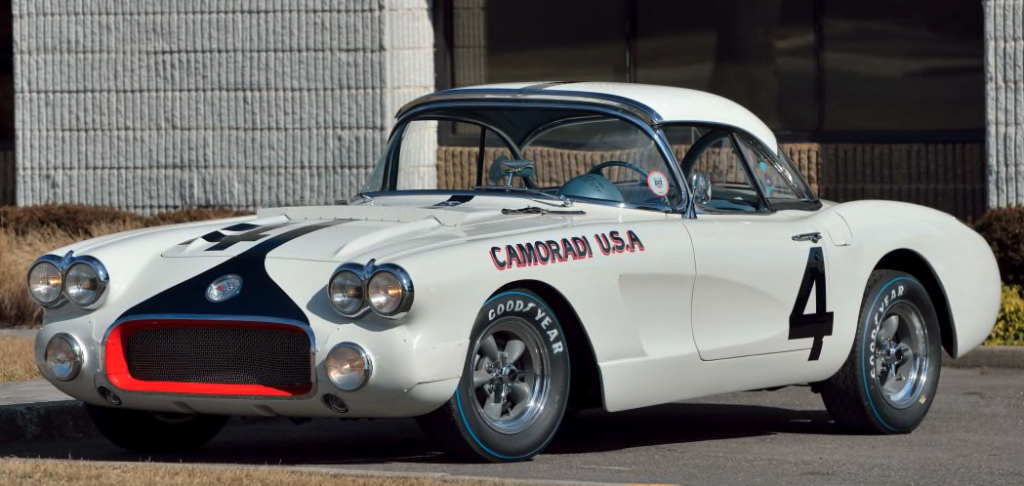
This 1960 Chevrolet Corvette, chassis 2272, was built by the Camoradi USA Racing Team, the racing equipe of Miami-born Lloyd ‘Lucky’ Casner. His day job was a commercial-airline pilot, but his passion for racing cars as varied as Alfa Romeo Giulietta and Ferrari 250TRs led him to make friends with Chevrolet general manager Ed Cole. In 1960, Casner has set up CAsner MOtor RAcing DIvision – Camoradi USA – with Fred Gamble, a racing driver and motoring journalist, which acted as Maserati’s works team in World Manufacturers’ Championship events.
Chassis 2272 was one of two provided to the Camoradi USA team under a special testing contract; the engine was specified by Arkus-Duntov and the car was built at the Chevrolet factory. Jim Jeffords won the 1960 Havana GT race on the car’s debut in late February, before taking eighth overall and the GT Class win in the Cuban Grand Prix. The next outing was the Sebring 12 hours, with Jeffords and Gamble finishing 32nd.
The car then headed abroad, with Gamble and Lee Lilley taking a crack at the Nürburgring 1000km, which ended with a faulty wheel bearing. That year’s Le Mans saw a tenth overall finish and second in the GT class, but Gamble and Lilley did not cover enough miles and weren’t officially classified. It then took victory at the 1960 Swedish Grand Prix GT race with Casner and Gamble on driving duties. The joy was slightly tempered by a post-race crash with future Lamborghini test driver Bob Wallace behind the wheel.
The car would remain in Sweden until 1994, when it was bought by American Loren Lundberg. He’d been searching for the car for years, and had found that the engine and gearbox had been removed after the crash and ended up in an offshore racing boat that eventually sank off the Australian coast. It currently has a 283/290 V8 with Rochester mechanical fuel injection and a four-speed manual transmission. Lundberg had the car comprehensively restored in 1990s, and it’s recently been treated to another with new paint, race-inspired interior and mechanical refreshment. It’s estimated at between $2m and $2.1m.
1931 Cadillac Series 452 V-16 Convertible Coupe
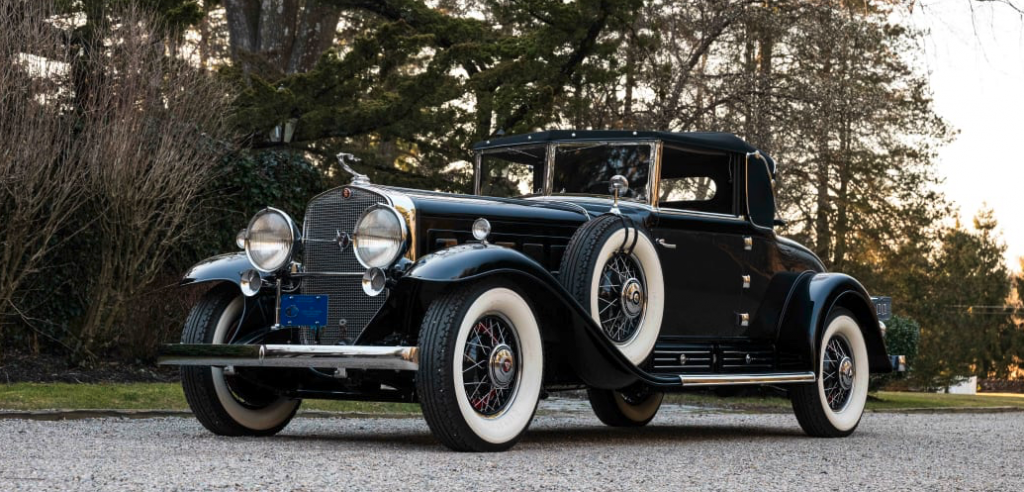
This Cadillac Series 452 is a regular on the concours scene, with First in Class at the 2020 Amelia Island Concours d’Elegance being a highlight result. It’s also won the CCCA National First Prize, AACA National First Prize (2008) and AACA Cadilla-LaSalle Senior, and took Third in Class at the Pebble Beach Concours d’Elegance in 2008. More recently it took First in Class at the Indianapolis Celebration of Vehicles, Misselwood Best of Show in 2013 and more besides. It’s estimated at between $800k and $850k.
1970 Dodge Hemi Challenger R/T SE ‘The Black Ghost’
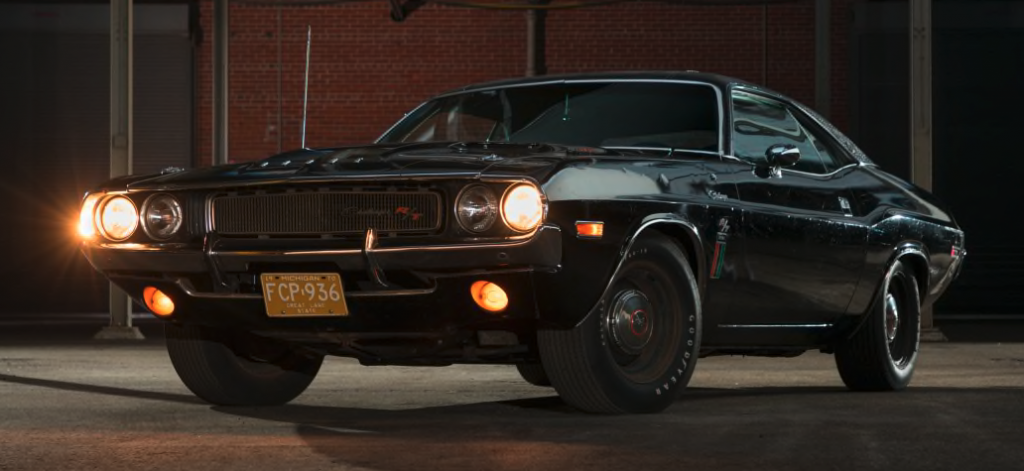
In the early 1970s a mysterious Dodge Challenger used to roam Woodward Avenue, Telegraph Avenue and Stecker. A low burble from its 426ci Hemi announced its arrival, and a flash of white from the bumblebee stripe was all that most street racers could see as it rocketed away into the Detroit night, leaving them in its wake.
And then… nothing. The car would appear for a few runs and beat those who were brave enough to take on this mysterious machine,
and then it would vanish for months at a time, earning it the name Black Ghost. The reason for this would only become clear many years later. Its owner was Godfrey Qualls, a former paratrooper with the 82nd Airborne Division and a recipient of the Purple Heart.
He was also a Detroit cop…
However, Qualls was also an avowed Mopar fan, inheriting his love of the brand from his father, Cleolous, who had moved from Tennessee to Detroit two years after Godfrey’s birth, to take a job at Chrysler’s Warren Truck factory. His dad loved racing – even taking Godfrey to the Indy 500 – and ran a black-and-pink 1955 Dodge Custom Royal four-door with a 270ci Super Red Ram V8 under the hood.
There was inter-brother rivalry with Godfrey’s brother, also called Cleolous, who upon his own discharge from the army ordered a 1968 Dodge Charger R/T complete with a 440ci V8. Not to be outdone, when Godfrey left the military in 1969, he went to the very same dealership and meticulously ordered a 1970 Dodge Challenger R/T Special Edition. There was no messing about – this was a 426ci Hemi with a four-barrel carburettor, four-speed manual transmission, AM/FM radio, Gator Grain roof, right-hand mirror and locking gas cap. Godfrey also opted for cloth/vinyl seats, because he felt that leather would be too sticky for toasty Detroit summers. He ended up with what’s believed to be a true one-of-a-kind Challenger.
The Dodge certainly made an impression in its rare appearances, and it was notable for avoiding the usual burger-joint and gas-station hangouts, preferring instead to stalk the shadows. After all, if Godfrey was found out, he would be fired from the police department. The car’s last sighting would be in around 1975, and it wouldn’t be seen in public again for decades.
The reason? Godfrey had become a father, and with even more on the line if he ever got caught street racing, the Challenger was mothballed in a garage. Just before Godfrey’s death on Christmas Eve 2015, the car’s title was passed to his son, Gregory. He’d bring the car back to running condition with the help of Dean Herron, who’d been one of very few people to know the true story of Godfrey and his Challenger. In 2017 it made its public debut at the Muscle Car and Corvette Nationals in Rosemont, Illinois, which started a love of car shows for Gregory. It would later win the HVA National Automotive Heritage award at the Chrysler Nationals, and become the 28th National Historic Vehicle Register inductee. No estimate has been released at the time of writing.
1969 Chevrolet Chevelle Convertible
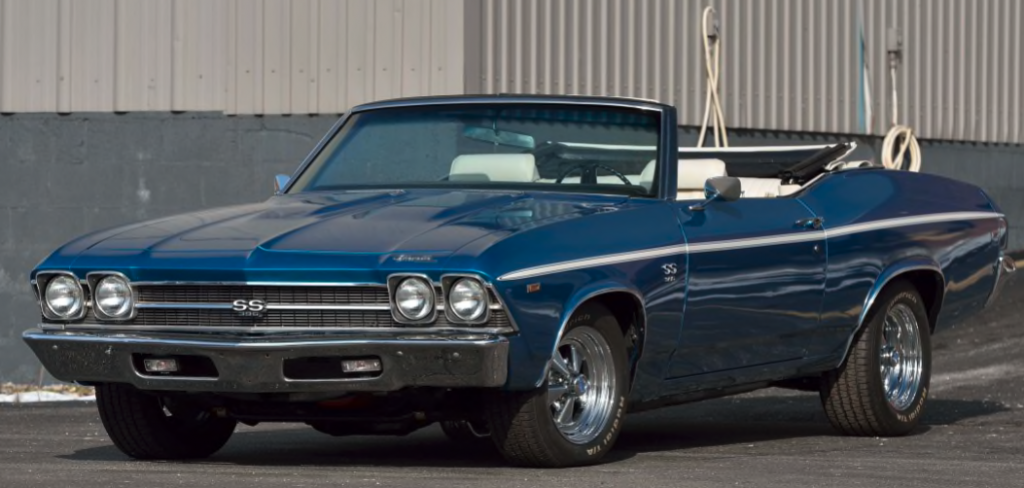
This Chevrolet Chevelle is one of two cars among Mecum’s lots to have rock-star ownership. The other is a more modern Porsche 911 owned by Eddie Van Halen, while this car was owned by Bruce Springsteen between 1981 and 1987.
Springsteen then gifted the car to Toby Scott, who worked as either a recording engineer or a mixer on more than 18 of the superstar’s albums. During Springseen’s ownership the car was repainted Midnight Black, but during an intensive restoration started in 1988 and finished in 2020 it was returned to Le Mans Blue. Following the completion of the work, the Chevelle was delivered to the Rock & Roll Hall of Fame in Cleveland, Ohio in August 2020, where it was displayed with the surfboard that Bruce would put in the back when going to the beach at his New Jersey home. The car comes with a signed letter from Springsteen confirming ownership. It’s estimated at between $150,000 and $200,000.
1970 Plymouth Cuda 440 Rapid Transit Show Car
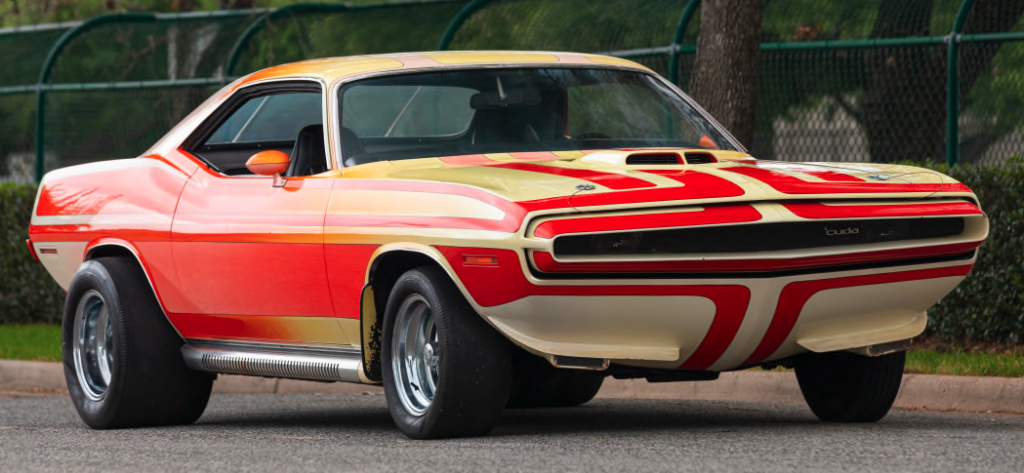
The Rapid Transit System Caravan was a touring group of factory custom cars that were displayed at major motor shows and car dealerships, run for Plymouth by ISCA promoter Bob Larivee. It featured four machines: a Duster, a Road Runner, Don Prudhomme’s yellow funny car and this very early Cuda – serial no. 100005.
Its redesign and paintwork were penned by Hot Wheels artist Harry Bradley, with the transformation performed by customiser Chuck Miller. According to Mecum: “Every change seen formed onto this body was completed in steel. The nose was constructed from four identical angles welded into a single insert, completed with custom-made corners and a mesh grille, with Cibie headlamps mounted behind. The rolled front pan features a split-spoiler layout with integrated lower lens housings. Side pipes, wide tyres on Cragar wheels and 1/8in steel dirt flaps are on each side, and Miller added custom taillamps, a faux parachute, metal changes and chrome caster-style show wheelie bars to the rear.”
The car has been hidden away for more than 50 years – this is the first time it’s been offered to the public since the 1970s – and is presented in unrestored form with 967 miles on the odometer. It’s estimated at between $500k and $750k.
1971 Chevrolet Corvette Export ZR2 Coupe
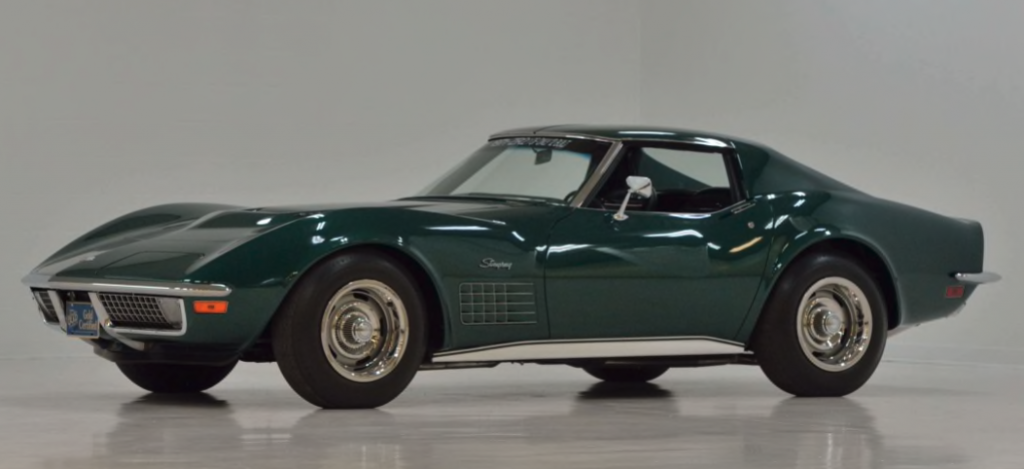
The ZR2 spec was offered for one year only – 1971 – and just 12 cars were specified as such. What makes the car special was the 454ci RPO LS6 engine with a lowered compression ratio and aluminium cylinder heads, matched to an M22 Rock Crusher close-ratio manual transmission. The specification also provided beefier brakes, a bespoke aluminium radiator with a metal fan shroud and upgraded suspension. This car is believed to be the last ZR2 ever built by Chevrolet, and was first delivered to Golden Mile Chevrolet-Oldsmobile in Toronto, Canada. Since then it’s had a body-off restoration by Corvette Repair Inc. in Valley Stream, New York. It’s estimated at between $475k and $600k.
1969 Chevrolet Corvette L88/ZL1 Greenwood Race Car
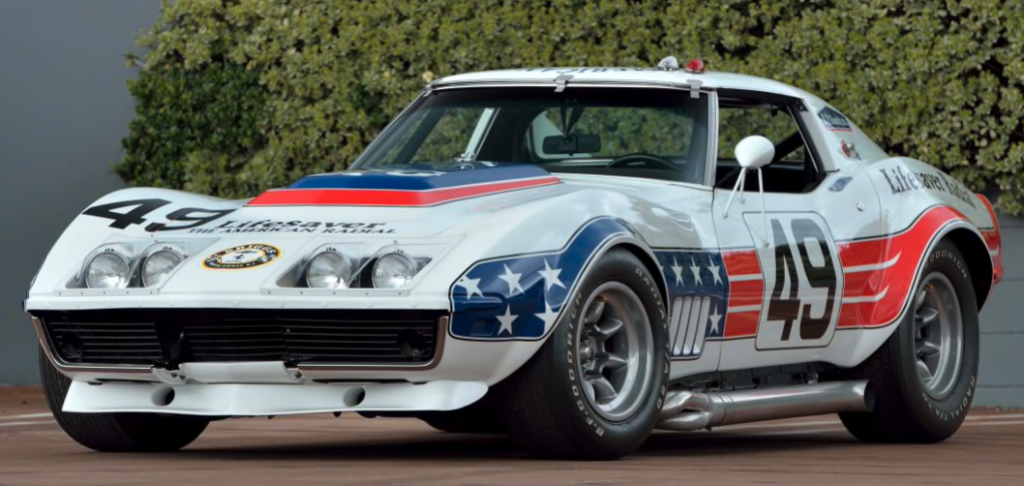
This 1969 Chevrolet Corvette L88/ZL1 was built by John Greenwood and sponsored by BF Goodrich during the 1971-1973 seasons to showcase the new line of T/A radials. The Stars and Stripes livery was designed by Bert Greenwood, and was fitted with a race-spec ZL1 engine. However, it wasn’t supposed to be a racing car – it was originally intended to be a promotional model for BF Goodrich, but after the number 50 Corvette was damaged in a crash, number 49 was pressed into service.
It would take first place in the GT class at the 1972 Watkins Glen Six Hours with John Greenwood and Dick Smothers behind the wheel, and would also see action at the Sebring 12 Hours, Daytona 24 Hours and Le Mans 24 Hours in 1973. At Le Mans it set the speed record for a GT class car – 215mph on the Mulsanne Straight. More recently it’s had a concours restoration by Corvette Repair of Valley Stream, New York, and has been a regular on the show circuit, winning the Best in Class title at The Quail, A Motorsports Gathering and the Amelia Award at the 2009 Amelia Island Concours d’Elegance. It’s currently running an all-aluminium, race-spec ZL1 427/750 HP engine built by Traco Engineering, matched to a Muncie close-ratio four-speed manual transmission. No estimate was provided at the time of writing.
1937 Cord 812 Supercharged Sportsman Convertible Coupe

Just 64 Cord 812 Supercharged Sportsman Convertible Coupes were ever built, and this one has been treated to a frame-off restoration by Steve’s Auto Restoration in Portland, Oregon. Since the work’s completion, it’s won First Prize at the Portland Forest Grove Concours d’Elegance and achieved Best of Show the following year. It’s estimated at between $200k and $300k.
1976 Harley-Davidson 1200 FLH Bicentennial
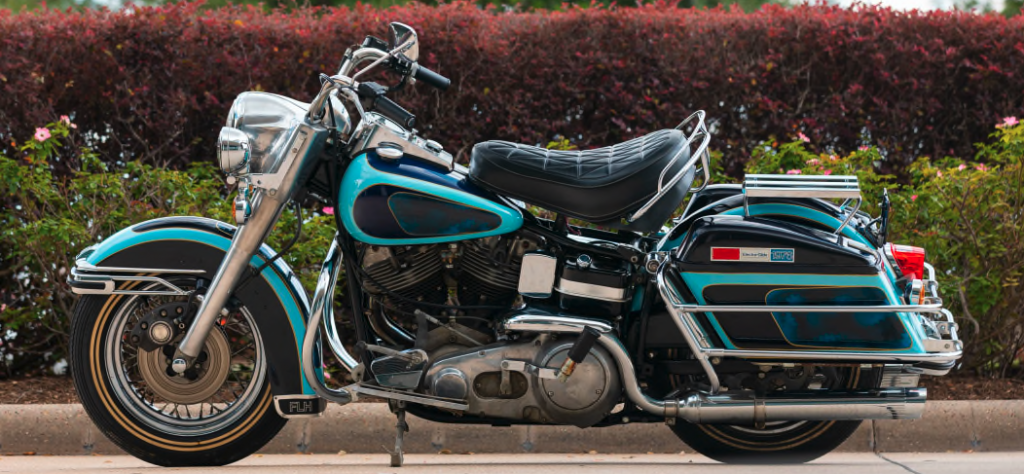
This 1976 Harley-Davidson FLH Bicentennial was the last Harley bought by Elvis Presley – a year and one week before his passing. As shown by the original California title, signed by Elvis himself, the motorcycle was registered to his home at 845 Chino Canyon Road in Palm Springs, California – it also comes with his own personal set of keys. After Presley’s death the bike is believed to have been sold to a hotel owner in Wildwood, New Jersey for display and promotional purposes. It was then put on display at the Pioneer Museum in Murdo, South Dakota between 1983 and 2019. In that time it’s covered 1261 miles, and it is still on its Presley-signed title. No estimate was provided at the time of writing.
1929 Duesenberg Model J LaGrande Blind Quarter Brougham
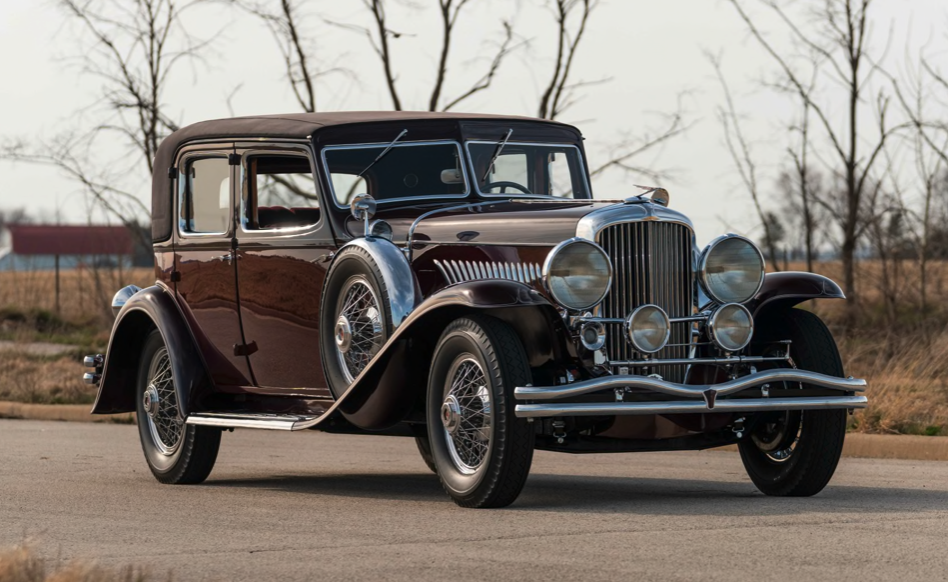
This 1929 Duesenberg Model J LaGrande Blind Quarter Brougham was delivered to its first owner, Alice Paddock, on August 16, 1929 with a Weymann sedan body, but three years later it was sent back Duesenberg to be upgraded to LaGrande Blind Quarter Brougham configuration by the new owner FD Daniels.
It passed through a couple of owners before ending up in the hands of a Mr Evanston of Norfolk, Virginia, who’d keep the car until 1951. It would have several owners throughout the ’50s, eventually ending up with Duesenberg specialist Jim Hoe of Hoe Sportcar Garage in Weston, Connecticut. It was soon passed to W Wolin of New York, who kept it until 1961, and then sold to Irving Gardner, who kept until 1985. Stewardship passed to Everest Wilson, who kept it until 1992, when Tommy Crook of Washington acquired it, commissioning a restoration by Libby’s Classic Car Restoration Center in Shrewsbury, Massachusetts. In 2007 it was sold to Thomas Rupf in Germany.
For more details on Mecum’s auction, click here.
